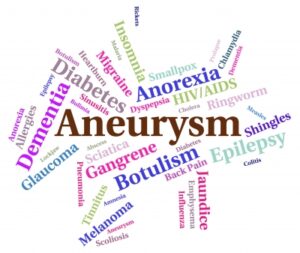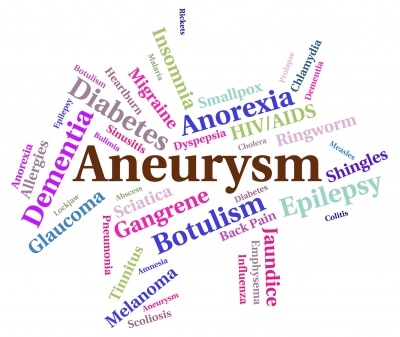
What is an aneurysm?
When the wall of an artery weakens, if a bulge develops that’s an aneurysm. Of course, that bulge is a balloon of blood, and that’s the problem. Aneurysms can occur in many parts of the body. They usually develop where blood pressure is the strongest. Those are the areas where blood vessels divide and branch off. The two most dangerous areas for aneurysms are the arteries supplying blood to the brain and to the aorta.
To understand how large an aneurysm can become, the normal diameter of the aorta (the large artery that originates at the left ventricle of the heart and passes down through the chest and abdominal cavities) is around 0.8 inches. But with an aneurysm, this width can balloon, literally, to over 2 inches. This size of aneurysm would necessitate surgery from the team at Texas Neurosurgery.
What causes an aneurysm?
The causes of the weakening of the arterial wall that allows an aneurysm to form are a relative mystery. Some aneurysms are congenital; others may result from a slight defect in part of the arterial wall. Although the direct causes of aneurysms are unknown, certain risk factors make it more likely that a person may develop one. These risk factors are:
- Plaque buildup on arterial walls
- High blood pressure
- Poor elasticity of arterial walls
- High cholesterol levels
- Smoking
- Pregnancy
- Blood infections
How do you know you have an aneurysm?
Most aneurysms only produce symptoms when there are complications such as a rupture. Symptoms can be related to the cause of the aneurysm rather than the aneurysm itself. Ultrasound screening can detect aneurysms, particularly with aortic aneurysms.
Treatment
An aortic aneurysm, whether abdominal or thoracic, may not need any active treatment and instead may just be monitored regularly. At Texas Neurosurgery, we may use medication and other preventive measures in a conservative management strategy. Or, if we see a more serious immediate threat, we may use active surgical treatment.
Aneurysms that rupture require emergency surgery. Without immediate repair, a ruptured aortic aneurysm is almost always fatal.
The decision to operate on an unruptured aneurysm in the aorta depends on factors such as age, general health, the characteristics of the aneurysm, and other factors such as abdominal pain. An aneurysm with a large diameter or one that is growing quickly is more likely to merit a recommendation for prompt surgery. We generally use endovascular surgery if the conditions allow due to shorter operating times and shorter hospital stays.
If you have questions about aneurysms, don’t hesitate to contact our office, 214-823-2052.
Image courtesy of Stuart Miles at FreeDigitalPhotos.net


